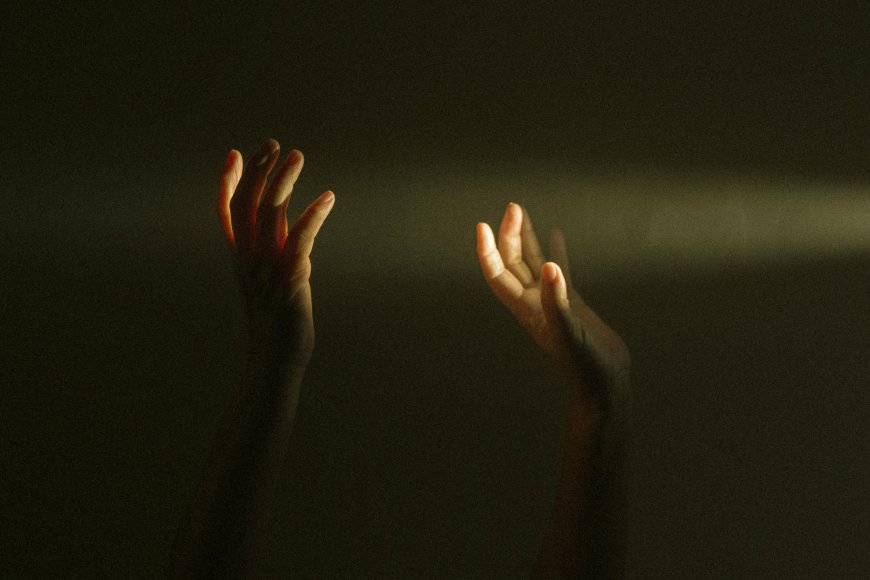The Curse of Dancing Death: A Spine Chilling Tale of Hysteria That Claimed French Lives
This bizarre yet true incident occurred in 1518 when a French town fell into a mass dancing hysteria for weeks, ending the lives of many. Was it a witch's curse or a case of possession? What began as an innocent dance spiraled into chaos, leaving a trail of exhaustion and death in its wake.

It's a sunny day in 1518, in the streets of Strasbourg, a woman named Frau Troffea comes out of her house and begins dancing. The lady keeps dancing in amusement, spinning, twisting, and jumping, without any music. However, what seemed like a festive occasion quickly turned into a nightmare.
The view was entertaining and her enthusiasm captivated the attention of passers-by who came to join the fun, without knowing what was about to come!
It had been six consecutive days, and Frau Troffea was still relentlessly dancing without any food or sleep. What began as a solitary act of joy soon evolved into a collective frenzy. The situation yet alone was alarming but it escalated into bizarre circumstances when people began to join her inexplicable urge to dance.
From 34 dancers to an astonishing 400, the town watched in disbelief as more people succumbed to this Dancing Plague. Desperate to put an end to this madness, the Strasbourg city council erected a stage and hired musicians, hoping to exhaust the dancers.
But it was too late!
People were overwhelmed by exhaustion and began to drop. Some lose consciousness, others, the unfortunate ones died of heart attacks. Reports suggest that up to 15 people per day were dying and seemed like it was going on forever. Until the worst-afflicted dancers were taken to the holy shrine where they stopped dancing, the remaining dancing slowly stopped as well.
1514 Dancing Plague or the Dance Epidemic
This was a mass hysteria incident known as the Dancing Plague or Dancing Epidemic of 1514. A case of dancing mania that occurred in the Holy Roman Empire or as it evolved into today's France in July 1518, and continued for at least five months.
There are different theories over the number of deaths, scientific and religious explanations, witchraft, spellbinding, disease, and most importantly, the role of the City Council in handling this matter.
It's hard to imagine that people kept dancing for many days in an altered state of consciousness. They were without any food or sleep, with bruised and bloodied feet. This dissociative trance involved a dramatic loss of self-control where the onlookers state the dancers were wild, furious, and seeing visions.
They were not fully conscious. They danced when their minds were no longer clear. The epidemic gradually faded as the dancers were finally taken to a mountaintop shrine to pray, but the mystery remains.
What drove these people to dance until they collapsed? And what does this bizarre chapter in history reveal about the human mind under stress?
The Role of Strasburg City Council
The stage was constructed, and professional dancers and musicians were hired to provide the backing music. But was this enough to quell the madness? Unfortunately, it was not. As the days dragged on, the dancing death began to take the lives of dancers. Some died of sheer exhaustion, others of strokes and heart attacks but the episode continued till September until the dancers were taken to a mountaintop shrine to pray.
Credibility of Death Tolls
There are controversies regarding the veracity of death. The true death toll from this bizarre epidemic remains shrouded in controversy. While sources claim that the dancing death epidemic killed around fifteen people per day, the Strasbourg city council did not mention any fatalities. Experts say that the final death toll is unknown but the claims of fifteen people dying per day is true. If it's rightly said then the toll could be in the hundreds.
Jhone Waller who wrote several journal articles on this subject and a book titled A Time to Dance, a Time to Die: The Extraordinary Story of the Dancing Plague of 1518, stated that deaths were all from later accounts of events. Yet the first one to be the initial dancer was Frau Troffea.
Similar Incidents
The Strasburg dancing death plague seems like a legend. However, it is well documented in the 16th-century history record. It's not the only known incident of its kind. Similar cases took place in Germany, Holland, and Switzerland but not as deadly as this one.
There were many victims of the strangest afflictions in Western history. In 1237 a group of children from the German city of Erfurt fell into the same mania and kept dancing and leaping to the 12 miles towards the neighboring town of Arnstdt before collapsing in exhaustion.
A similar incident was recorded for the very first time in 1374 when there were dozens of medieval towns along the valley of the river Rhine, and hundreds of people were compelled to dance.
They scarcely paused to eat or sleep and danced for even days in succession. The mania spread across the large areas of north-eastern France and the Netherlands, continued its hauntings for several months, and then disappeared. It reappeared in 1518, consuming about 400 individuals, and causing the deaths of dozens of victims.
An equally strange epidemic gripped a nunnery in the Spanish Netherlands in 1491. Several nuns got possessed and began to race like dogs. They jumped out of trees and kept imitating birds, and cats. Over the next 200 years, hundreds of nuns plunged into this state of delirium. They not only foamed and screamed but also confessed to having carnal relations with devils.
The dancing plague seemed to cease with the Middle Ages but the mass psychogenic illnesses kept occurring throughout history.
For instance, in 1962, around 1,000 Tanzanians began to laugh uncontrollably, some for up to 16 days at a time, and the epidemic lasted for 18 months. In 1983, around 1,000 Palestinians began to feel dizzy and fainted. Although they blamed Israel for being involved in some kind of chemical warfare. Yet the nature of affliction revealed that it was something else. As if it could be a chemical attack, it could only impact 20% of the reported cases.
These events may sound improbable but there is clear documented evidence including facts, to suggest that they did happen.
Reasons
Historian John Waller believes that the dancing plague may be connected to St. Vitus, a Catholic saint whom 16th-century Europeans feared could curse people with uncontrollable dancing. Coupled with the widespread disease and famine plaguing Strasbourg in 1518, this superstition may have sparked a stress-induced hysteria that swept through much of the city.
Other theories suggest that the dancers might have been part of a religious cult or that they inadvertently consumed ergot, a toxic mold found on damp rye that can lead to spasms and hallucinations.
Throughout history, various interpretations have arisen regarding these bizarre and often deadly episodes. While some believed the dancers were members of a heretical cult, contemporary observers recognized the dancing as a form of illness. The Church, too, viewed the dancers as victims of a severe affliction, whether of natural or divine origin.
In recent years, some scholars have posited that these episodes of “epidemic madness” were linked to ergot ingestion. However, research in psychology, history, and anthropology suggests that the dancing plagues and possession outbreaks in European nunneries are more accurately understood as instances of mass psychogenic illness.
Theories Behind These Incidents
Since the ban was ignored, the dancers were taken to a nearby shrine dedicated to St. Vitus. People believed he was a vengeful saint who could curse those who displeased him. To appease him, each dancer was forced to wear red shoes and dance around his statue in a grotto. After several days of dancing, the people stopped. The plague had ended, but the cause remained unclear.
Mass Food Poisoning Theory
When combined with the many diseases and famines that were running rampant in Strasbourg in 1518, it may have been just enough to trigger what we now know as stress-induced mass hysteria through a great portion of its people. It is speculated that a mass food poisoning.
Ergot can grow on the rye, which is a staple of their diet and which causes LSD-like hallucinations. But ergot is generally harmless unless one were to consume it over a prolonged period, so the likelihood of this theory is next to nothing. Alternative hypotheses have contended that the dancers belonged to a religious sect or had eaten ergot, which is a toxic mold found in damp rye responsible for symptoms such as spasms and hallucinations.
Mass Hysteria
A more likely explanation is mass hysteria. The people were already stressed from disease and starvation and believed that God was unhappy with them. Seeing others dance might have made them feel pressured to join in, leading to a group madness called 'stress-induced psychosis.' This fear of God drove them to extreme actions.
A Reaction to the Plague?
The medieval dance of death may stem from the aftermath of the Black Death in the 1340s and 50s, which killed a large portion of the population and caused famine. After these horrors, people known as flagellants would whip themselves in the streets, trying to show their devotion to God. In 1360, women and girls in Lausitz began dancing and shouting at the image of the Virgin Mary.
Over the years, many explanations have been proposed for the dancing frenzy, including claims of a dancing cult or a disorder known as St. Vitus’s Dance. Recent studies suggest that environmental factors could be involved, like ergot contamination. However, the dancers seemed disconnected from their bodies, indicating that psychological factors were more likely the cause.
The region also faced extreme floods and plagues, leading to despair among the people. This suggests that their stress could have triggered the mass dancing. Although we can’t ignore the link between stress and dancing mania, the true reason for the dancers’ behavior remains a mystery.
FAQs
Is the dancing plague fake?
No, it’s not. What seems like a fake tale is a well-documented incident present in the records of the 16th century. Even similar incidents occurred in Switzerland, Germany, and Holland, some with major others with minor inflictions.
What is the truth about the dancing plague?
Numerous historical documents verify the happening of the Strasburg dancing plague in 1518. The evidence includes doctor's notes, church sermons, notes from the city council, and other texts all confirm similar details.
What were the symptoms of the dancing plague?
The victims of dancing death who recovered afterward reported several symptoms including chest pains, convulsions, hallucinations, hyperventilation, epileptic fits, and visions. In the end, most simply dropped down, overwhelmed with exhaustion.
How many dancing plagues were there?
The well-recorded documents suggest about the dancing plague incidents of 1374, 1463, and 1518.
What's Your Reaction?






































